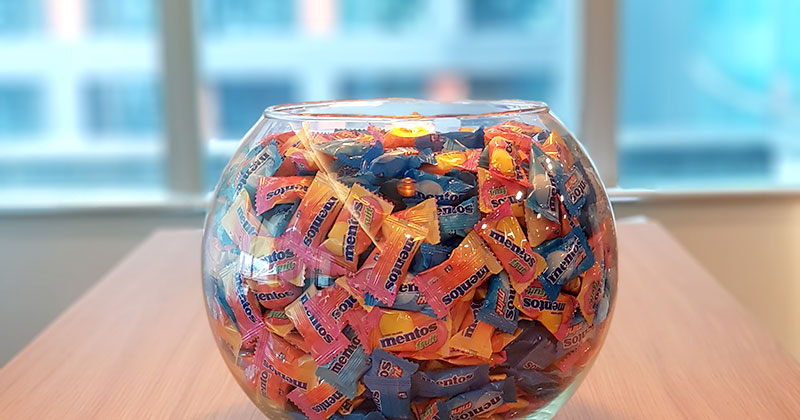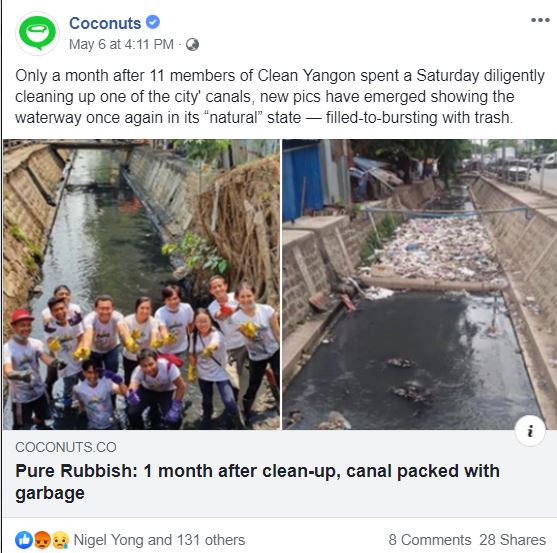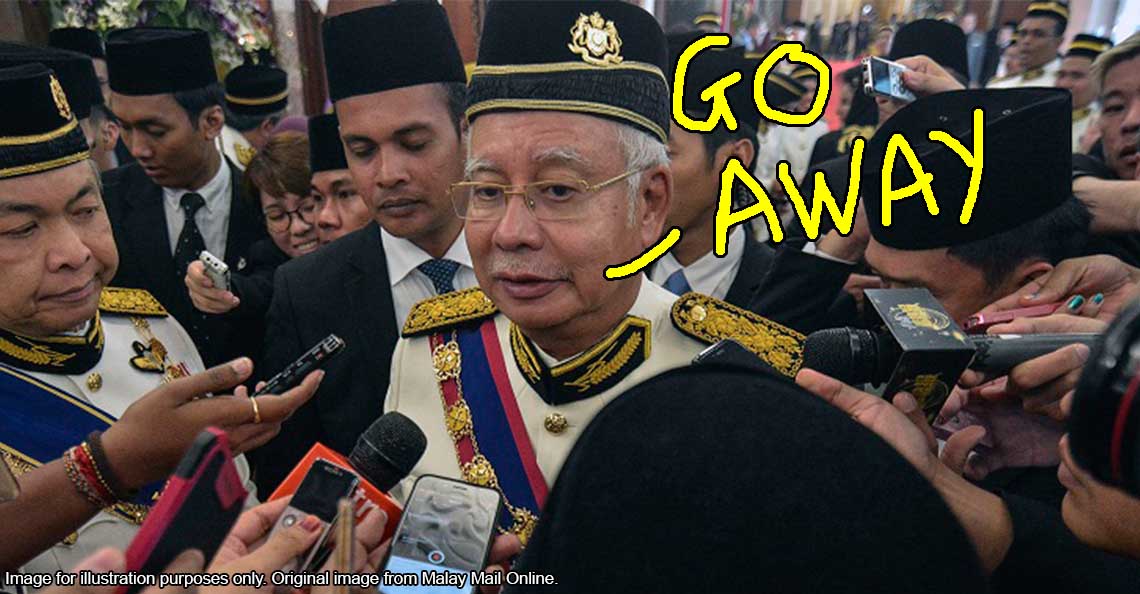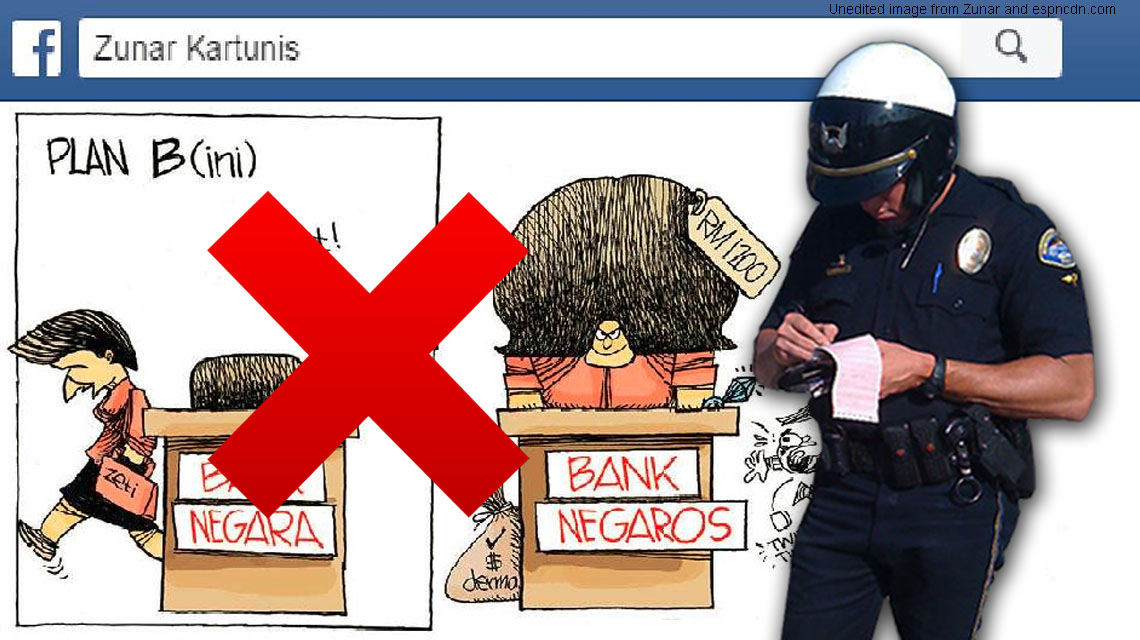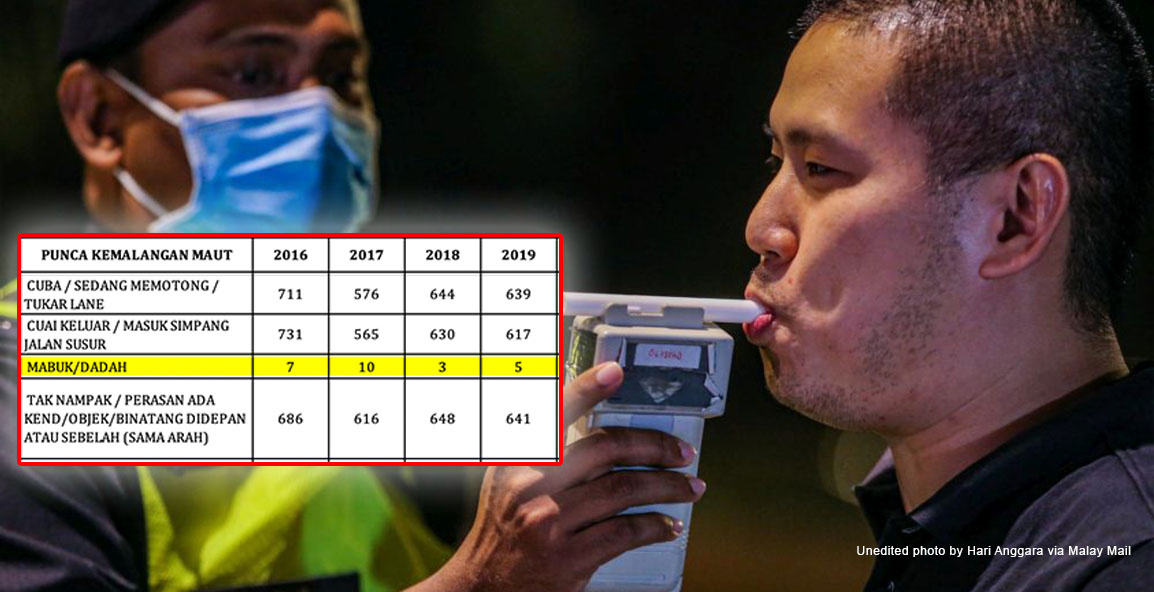The gomen just asked all civil servants to cut plastic use. But how specifically?

- 3.3KShares
- Facebook3.2K
- Twitter2
- LinkedIn3
- Email2
- WhatsApp21
In the current era of warnings against single-use plastics here and there, the Ministry of Energy, Science, Technology, Environment and Climate Change (MESTECC, Yeo Bee Yin’s ministry) launched the Roadmap Towards Zero Single-Use Plastics 2018-2030 last October to turn Malaysia into a zero single-use plastic nation by 2030.
So, to facilitate the efforts outlined in the roadmap, the National Chief Secretary Ismail Haji Bakar has written a directive to urge govt depts and ministries to ditch single-use plastic products by suggesting ways the govt offices could do so.
“The Cabinet has approved Malaysia’s Roadmap Towards Zero Single-Use Plastics 2018-2030 on 10 October 2018 and recommends that all ministries need to play a role among others, by holding campaigns such as the use of single-use plastic products at government offices.” – quoted from the directive.
However, when we went through the Roadmap document, well, umm…
The Roadmap is a bit potong stim
When we first saw the pretty cover of the Roadmap document, we were pretty excited to see what’s in store for Malaysia for the next 12 years. We scrolled through a seemingly promising first few pages of the intro, vision, problem statement blahblahblah…
Then we reached the Action Plan… OK LA here’s the real meat.
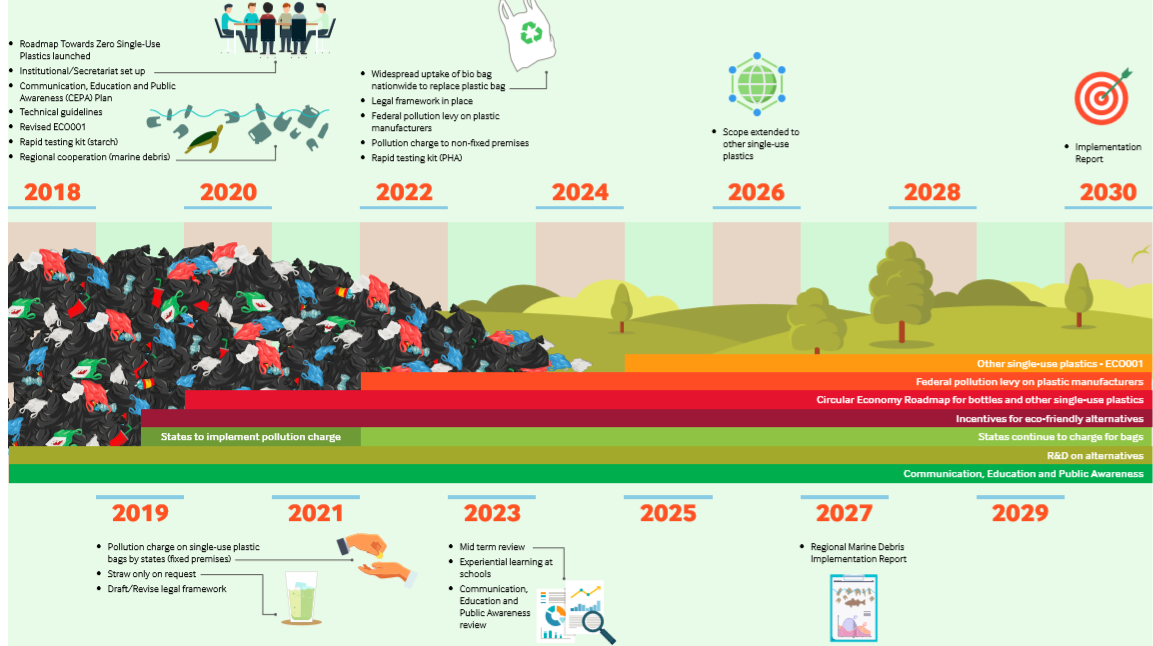
The plan for 2018, after launching the roadmap last October, is to mostly write a few guidelines, establish a committee, and fund research.
In 2019, we started to see a few familiar on-the-ground stuff such as the “no straw by default“, minimum 20 sen pollution charge and reusable food containers for tapaus while the rest of the initiatives are pretty much behind-the-scenes.
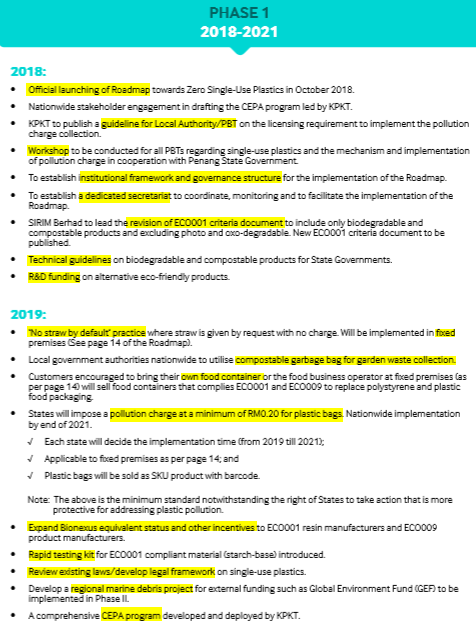
2020 onwards, and the vision gets a bit blurrer (hahah pun!) they are supposed to prep for a Circular Economy Roadmap (CER) and 2022 is where they introduce bio-plastics to replace regular plastics in terms of straws and bags.
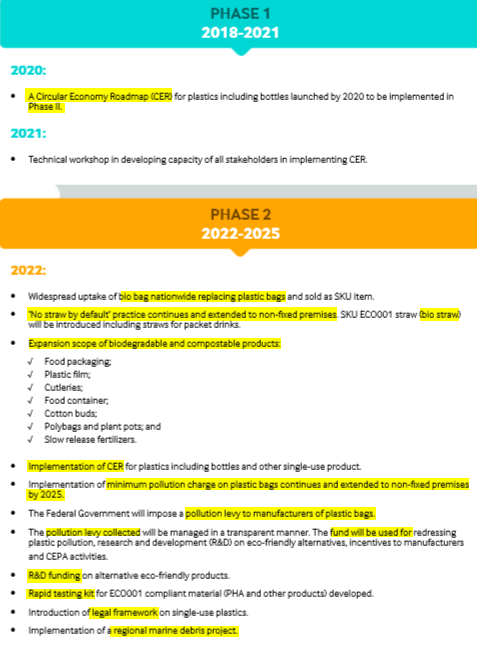
But 2023 doesn’t look too promising as there’s only one on-the-ground initiative. The remaining years of the roadmap involve more continuations and expansions of existing initiatives, with a report wrapping up the roadmap. Lotsa meetings, lotsa reviews etc.
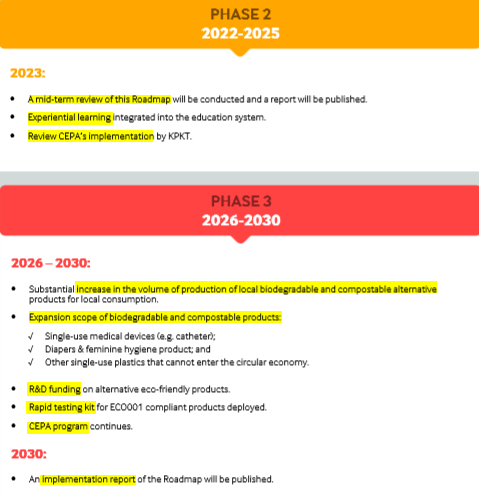
We understand that it’s hard to create a roadmap so far ahead, but given the urgency of current environmental needs, it’s a little underwhelming. There are actually a few things that the govt could do to make their plans more effective, especially within its own office departments/ministries.
4 simpler ways the govt depts can get rid of single-use plastic
One of the things we’ve noticed about govt-related events/meetings is that they tend to use a lot of single-use plastics for their refreshments. Here’s Exhibit A:

And another at *gasp* Jabatan Alam Sekitar’s meeting?? This was the one in our featured image.
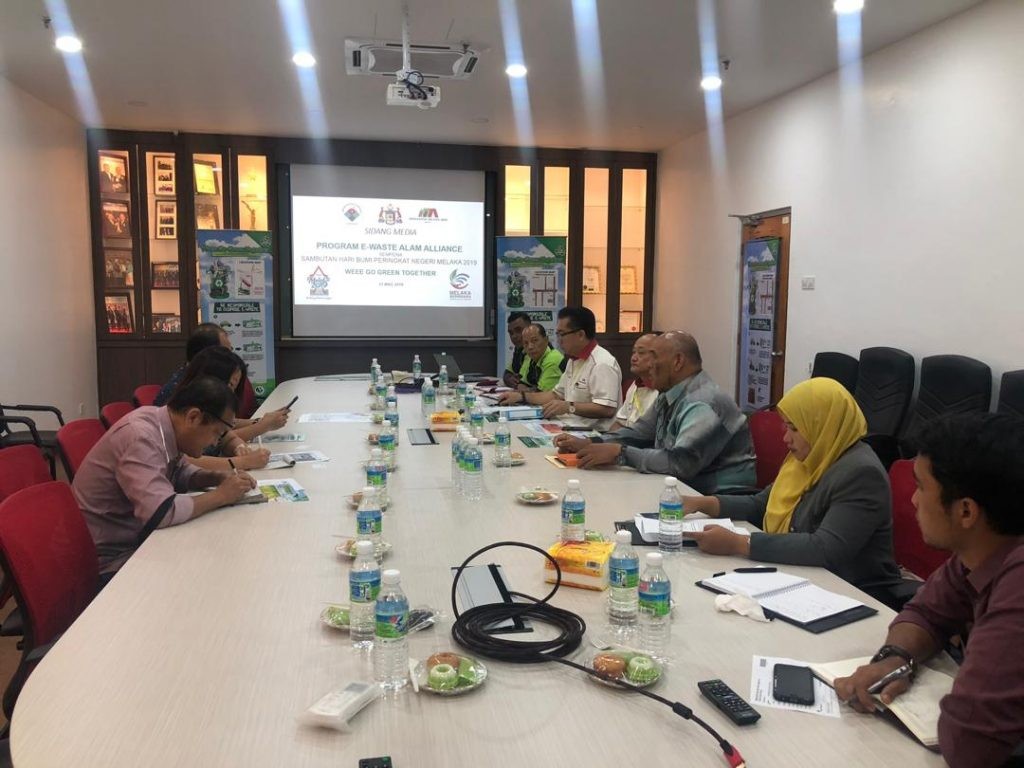
Some of us might think that we could recycle these used plastics, but as we learnt from one of our previous articles, recycling may not be as reliable of a solution as we thought. According to National Geographic, plastic waste (which can take at least 400 years to degrade) are mostly NOT RECYCLED but instead, end up in the junkyard.
With that said, we came up with some recommendations for the govt to easily cut down on single-use plastics at their events (or anything the govt servants do):
1. Remove usage of bottled water at all government events
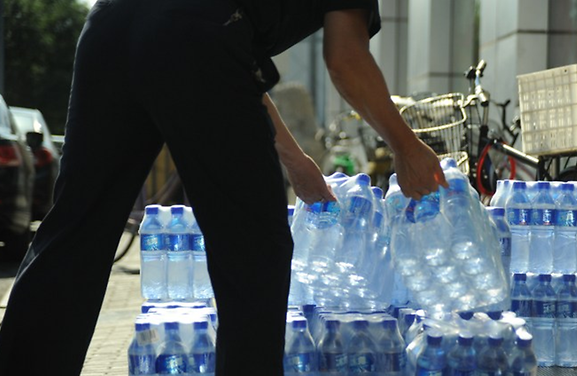
Let’s start with the elephant in the room: mineral water plastic bottles. If you Google for images of ‘plastic waste malaysia‘, you’d find that plastic bottles are the ones that stand out, maybe because plastic bottles are allegedly one of the largest plastic litters. And it also uses up 3 litres of water to produce a 1 litre bottle.
But they’re not just bad for the environment, they’re bad for our health too. In case you forgot, some plastic bottles have Bisphenol A (BPA), which has been linked to several health issues. And even if they’re BPA-free, they still contain other harmful chemicals, like the BPA alternatives! Tun M likes to follow Japan right? Well they just started banning bottles at government events too 🙂
The Alternative? Er… cups, jugs and mugs lor…. old school style. Speaking of cups…
2. Ban disposable cups at government
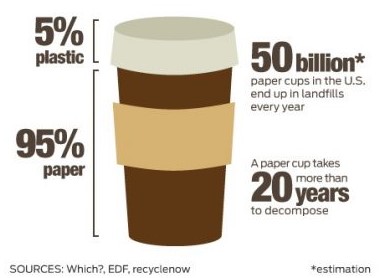
Even if the govt is thinking of replacing plastic bottles with coffee cups (and a drinks dispenser or a jug) to serve drinks at its events, it may not be a good idea either. Because even without the coffee cup lids as shown in the image above, the so-called paper cups themselves are lined with plastic, so these cups are not recyclable.
Scotland just did it… so we just go back to everyone’s favourite MILO or Horlicks mug with their marker name on it lo….
3. Ban individually wrapped sweets
In almost every hotel meeting room and conference area, there’ll be a bowl of individually wrapped sweets, which as another previous article of ours pointed out, are the biggest culprits of the high amount of single-use packaging.
On top of that, they’re also the second most common item found littered on beaches worldwide and difficult to recycle, especially since they’re small and made of different materials combined.
So, instead of buying these individually wrapped sweets, the simple alternative would be purchasing bulk-wrapped sweets or kuih in recyclable or biodegradable materials such as foil, paper boxes and paper bags for the govt event attendees who wanna satisfy their sweet teeth.
4. Ban plastic wrappers for gift hampers
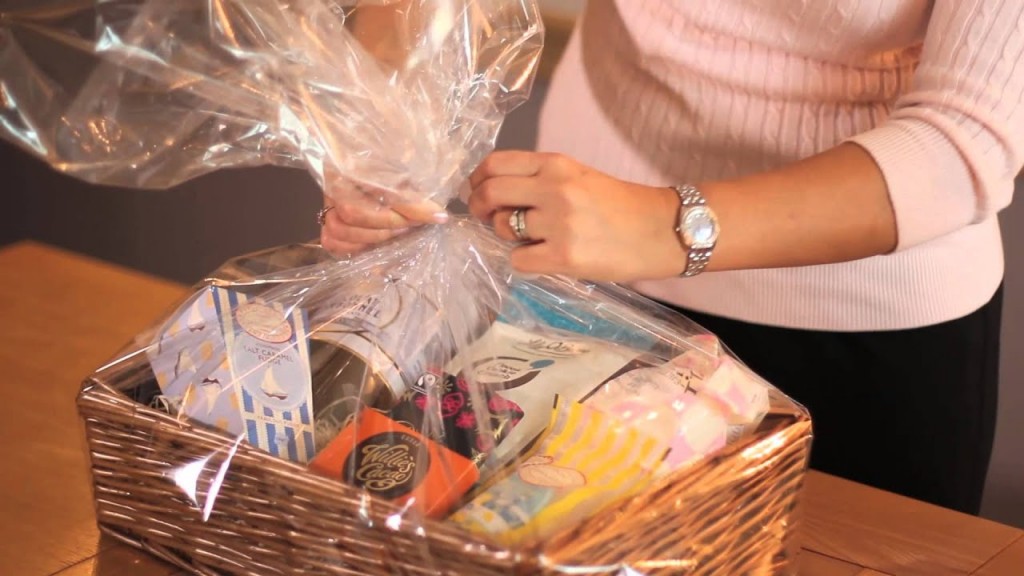
Gift-giving may have been a thing in the pre-PH govt days, though after PH took over, gifts have been limited to perishable goods like food and flowers in attempts to curb bribes. So, if peeps related to the govt wanna wrap food and flowers in gift hampers, wrapping them in plastic as usual should be a big no-no too.
Adding to the above image which seems to speak volumes about how much plastic is wasted in wrapping gift hampers, an article by PADI (Professional Association of Diving Instructors, not the Malay word for paddy) pointed out that packaging accounted for more than 60% of the plastic waste found on beaches.
So, the simple alternative would be not wrapping them at all but instead put the gifts (*cough* food and flowers) into reusable jars and vases.
The govt is moving in the right direction, but we don’t have forever
It’s not like the govt is doing nothing to tackle environmental issues in our country as efforts to make Malaysia eco-friendly isn’t limited to single-use plastics. However, it’s a big part of the entire equation, at the very least by setting an example. The Government runs thousands of meetings, seminars and events every year – just by banning use of these plastics at events like this could influence hotels, attendees and suppliers to change. China’s government ban on shark fin has indirectly led to an over 70% drop in sales of sharks’ fins in China.
Ever since Malaysia became the top choice for imported plastic waste last year, the govt has started looking for ways to stop other countries from treating us like a tong sampah. Recently, MESTECC has declared war on this issue after huge loads of smuggled waste were discovered in illegal recycling factories.
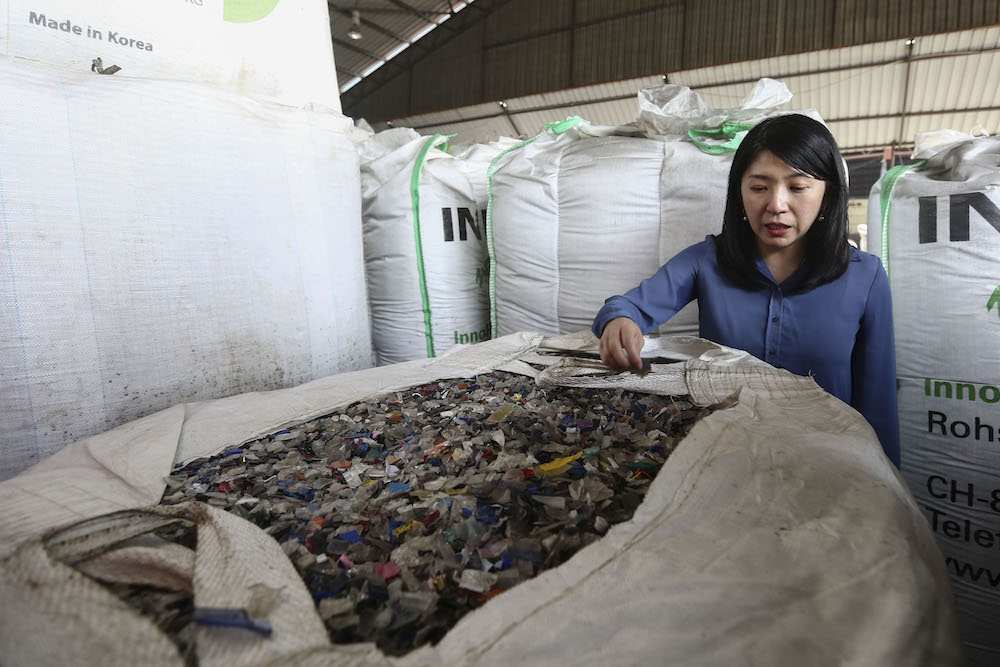
Additionally, the Housing and Local Govt Ministry (KPKT) announced plans to revamp Malaysia’s waste management system. KPKT Minister Zuraida Kamaruddin proposed to centralise recycling and waste management projects in one place.
“In two years, I’m going to centralise all these factories into one designated area — waste parks. Then it will be easier for us to monitor and manage. Anything outside this waste park will be illegal. So now they have to start thinking, correct themselves if they are illegal, and start applying for legal licences.” –said Zuraida.
The world is drowning in plastic, and despite efforts, usage is only going up. Here’s a recent article from Myanmar.
The world is literally drowning in plastic (according to NatGeo), and faster steps need to be taken. The rakyat have a core responsibility themselves, but the govt has the ability to speed up the process, by utilising its resources and calling the shots. Let’s hope that in a year’s time, featured images like the one we used will be a thing of the past.
- 3.3KShares
- Facebook3.2K
- Twitter2
- LinkedIn3
- Email2
- WhatsApp21

